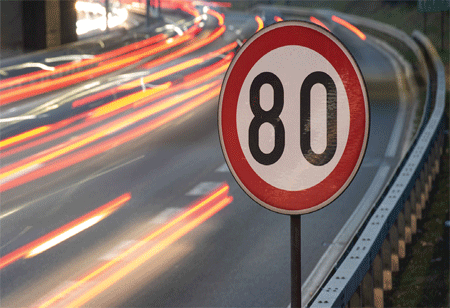It is ‘on record’ that India has one of the highest road death tolls in the world. A recent World Bank Report stated that India accounts for 11 percent of global road crash victims while having only one percent of the world’s vehicles. The total estimated road deaths in our country in 2019 were at 1.51 lakhs (this is higher than the Covid-19 deaths we have seen in 2020). As per the Ministry of Road Transport & Highways’ data, there has been a steady increase in the yearly road deaths in our country - from 2013 (1.37 lakhs) to 2018 (1.51 lakhs).
With such alarming numbers, we surely need to find innovative ways to make Indian roads safer. Firstly, we need to find the major causes for the road deaths or mishaps, and then tackle them through public awareness campaigns and enforcement of road traffic laws (that are being violated). Research suggests that among the greatest causes of road accidents in India are due to speeding, drowsy driving, drunk driving and not wearing protective gear while riding two-wheelers.
Road Safety: The Progress Made So Far
While in India the wearing of helmets is compulsory for two-wheeler riders under Section 129 of the Motor Vehicles Act, 1988, but unfortunately this is not well-enforced by the Traffic Police, and most citizens also do not feel the need to wear such safety equipment. Hence, broader and larger-scale awareness on the fatality and repercussions is needed in the near future to make people aware of the dangers, and a zero-tolerance attitude needs to be taken by the Traffic Police personnel.
The Government has taken an initiative in the right direction by increasing fines related to traffic violations under the amended Motor Vehicle Act in 2019. But imposing higher fines alone cannot solve this problem; instead, more monitoring of our roads and enforcement of traffic laws also
need to happen parallely so that traffic violators/perpetrators are caught and punished.
The Road Ahead: Technology Paves The Way Forward
Technology can surely play an important role in helping the Police monitor and fine traffic violators. Many Police command centres now include CCTV and dash camera footage or feeds to assist the police officers in carrying out their duties. Optical character recognition (OCR) software makes identifying number plates easy and can be used by Police at check posts to identify vehicles that have outstanding fines. Further, India could also introduce a points-based license system, so that people who are repeat offenders would have their driver’s license revoked. This measure has proved very effective in European nations, where most commercial drivers cannot afford to have their license revoked as it is their main source of income.
Creating technologically innovative ways to prevent road accidents/reduce the deaths has proved very successful - think how many lives have been saved by the invention of seat belts, airbags and anti-lock braking systems. The next set of advancements on this front will be driven by AI and advanced video cameras like Driver State Monitors (DSM) and advanced driver assistance systems (ADAS).
-
Creating technologically innovative ways to prevent road accidents/reduce the deaths has proved very successful - think how many lives have been saved by the invention of seat belts, airbags and anti-lock braking systems
Vanesh Naidoo, Founder & CEO, Safe Cams
DSMs are cameras that use advanced AI algorithms to monitor a driver’s face and gestures to ensure that the driver is not falling asleep, smoking, using a mobile phone or being distracted from looking at the road ahead. Speed limiters can be fitted to vehicles to ensure that they adhere to the maximum speed limit.
On the other hand, ADAS forward collision warning systems alert the driver of an impending collision with a slower moving or stationary car in front of the driver; thus this technology will help warn drivers of unsolicited situations in advance and prevent accidents before they occur.
In Conclusion
The cost of adopting these (above-mentioned) technological advancements or devices is small when compared to the number of lives that can be saved.
The faster we can adopt these new advancements, the safer our roads can be. The Government, private companies and the citizens of India need to collaboratively play their part in reducing the needless lives lost on our roads.
